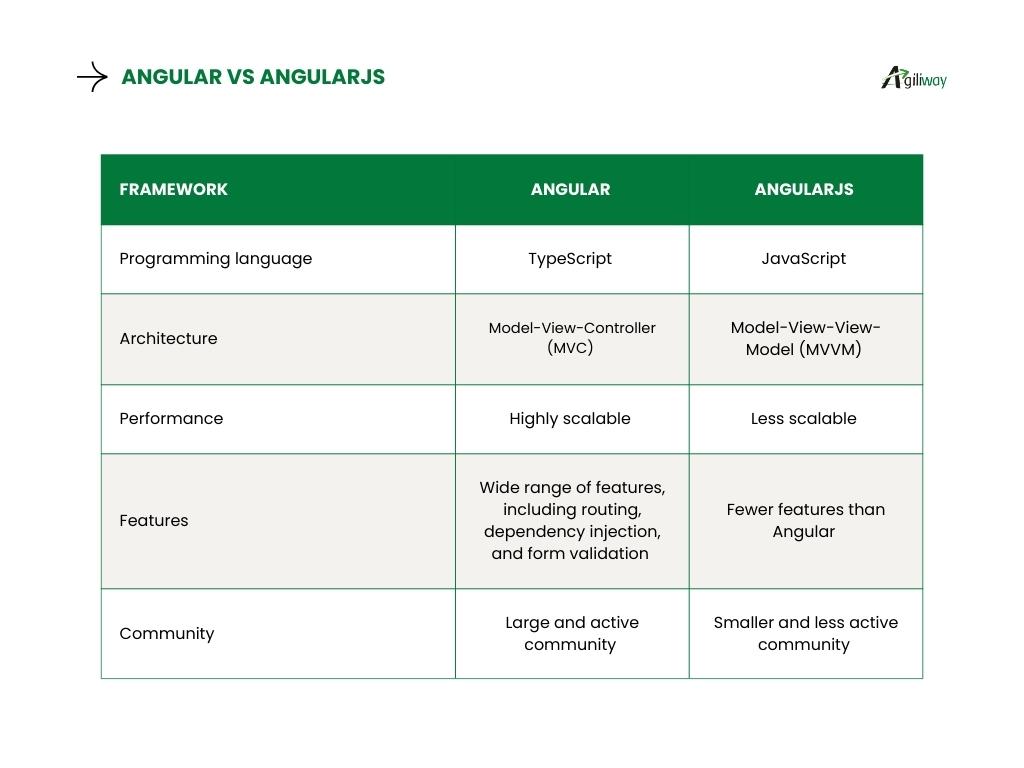Tech View: April Updates and Developments
Welcome, tech enthusiasts! April has passed with a whirlwind of innovation and enhancement. From AI advancements to mind-blowing glimpses of …
 17 | 11 | 2023
17 | 11 | 2023 Angular is a popular front-end web development framework that is mostly oriented toward creating complex websites and learning this language may be challenging. It is known for its strong performance, scalability, and features. However, Angular also has some drawbacks, such as its complexity and learning curve. Before using Angular in your next project, it’s important to carefully weigh the pros and cons.
In this article, we make an in-depth analysis of the pros and cons of Angular in tech and general aspects. But before we start, let’s dive into the history of Angular and define the differences between Angular and AngularJS.
The origins of Angular can be traced back to 2009 when a team of Google engineers created AngularJS, a framework for building web applications. AngularJS, a framework for web development, was introduced to the public in 2010 and acquired popularity quite rapidly.
Google nonetheless made a public announcement in 2014 that it intended to completely rewrite AngularJS. In 2016, the Angular framework was introduced. It was completely redesigned from the ground up, with a focus on speed and scalability and a new architecture.
Since its initial release, Angular has been continuously updated and improved. The most recent version of Angular includes numerous new features and enhancements, such as improved performance, increased TypeScript compatibility, and the introduction of a novel router. It is utilized by businesses of all sizes, ranging from modest firms to multinational conglomerates. Popular online platforms and services, such as Google Search, YouTube, and Gmail, make extensive use of Angular.
Angular and AngularJS are two prominent frameworks used in the domain of front-end web development. However, these two are completely separate entities.
Angular is a distinct iteration of AngularJS, which has been developed using the TypeScript programming language. The structure of the system exhibits novel architectural features, while its design prioritizes performance and scalability. TypeScript is an extension of the JavaScript programming language that incorporates additional functionalities, including but not limited to type safety.
AngularJS is a well-established framework that continues to enjoy widespread popularity. Moreover, it might be argued that AngularJS exhibits a lower level of scalability compared to Angular. It is noteworthy to mention that the discontinuation of the distribution of patches and updates for AngularJS occurred on December 31, 2021.
The table below encapsulates the primary differentiations between Angular and AngularJS.

Angular is a very resilient and versatile framework designed to develop the user interface of web applications. It is very suitable for the development of large and intricate applications that need exceptional speed and scalability. Nevertheless, it is important to acknowledge that Angular may not be the most suitable choice for every project. Before starting to develop a new project, it is essential for developers to carefully weigh the benefits and drawbacks of Angular.
If you haven’t decided on the best framework for you, feel free to consult with our IT experts with over 25 years of expertise in this sphere. The Agiliway team helps you to determine which framework is best for project development.
READ ALSO: Web Components: Revolutionizing Web Development With Custom Elements
Welcome, tech enthusiasts! April has passed with a whirlwind of innovation and enhancement. From AI advancements to mind-blowing glimpses of …
Businesses today have access to more data than ever before, from customer transactions and interactions to operational metrics and financial …
Conversational AI systems can engage in natural conversations and dialogue with humans. Powered by machine learning and natural language processing, …